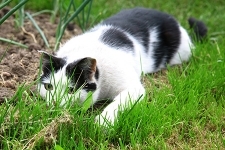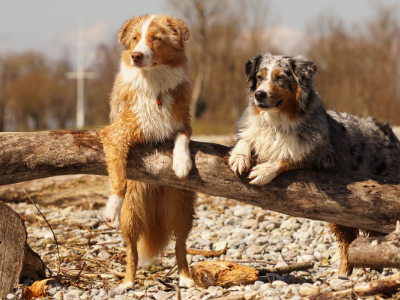Carnivore Corner
New to raw, or just need some tips on how to better balance your pet's diet? Visit the FAQs section of our site for answers to specific questions regarding raw pet food diets, and our Blog is a great place to find a wide variety of information about how to keep your pet happy and healthy. You can also connect with us on our Facebook page at www.facebook.com/3pnaturalsraw4pets, as well as Twitter @3pnaturals & Instagram @3pnaturals.
Cat Senses & Behaviour: Carnivorous Characteristics

The cat is an evolutionary phenomenon. Its behavior is a direct result of a highly specialized nervous system and body structure developed over millions of years. Cats have a fantastic arsenal of behaviors and skills that help them to hunt and survive as predators. Even when cats are left homeless and not fed by humans, they are able to adapt and hunt for themselves.
In a natural setting, cats hunt a variety of prey including mice, rats, voles, squirrels, and birds. Our domestic feline friends are hunters too. Most cat owners who allow their cats to go outside may have had a not-so-welcome present brought to the doorstep, in the form of a dead mouse or rat. Indoor cats retain their predatory instincts even if they have never caught prey. Popular cat toys include feathers and fur mice which are enthusiastically chased and pounced upon. In this article, the predatory nature of the cat is revealed. We must not forget the origin of the cat so that we may care for them properly.
The Facts About Bacteria, Parasites and Raw Diet

Pet owners often ask about bacterial contamination when feeding a raw diet. In this article, I hope to clear up any misconceptions about these concerns. 3P Naturals strives to provide safe and human-grade products that are meant to enhance your pet’s health. Our Food Safe standards guarantee the highest food handling methods are practiced. We offer tours of our warehouse facilities to all wholesale and retail customers. Contact us for more information. There are three main concerns that pet owners often ask about:
Carbohydrate Requirements for Cats & Dogs: Are They Essential?

I am often asked by pet owners about carbohydrate requirements for canines and felines. Most pet owners have heard a variety of answers from multiple sources and it can be a source of utter confusion with the array of pet foods available on the market today.
Carbohydrates are a source of energy that can be utilized by animals that have the metabolic abilities to do so. In addition, the quality and a particular source of the carbohydrate must be considered. Dogs and cats each have their own unique metabolic abilities to obtain nutrients from food. There are three sources of energy that can be utilized by most mammals: proteins, fats, and carbohydrates. It has been scientifically proven that carbohydrates are not required for dogs and cats to survive. Their evolutionary path has allowed them to live long and healthy lives without this form of food, presumably because they have evolved for millions of years without it.
The Finicky Eater: Solutions for Switching Fussy Felines and Picky Pooches to Raw

Some pet owners are faced with the task of creating a balanced diet for a less than enthusiastic eater. There are several tricks to help you switch your pet to a raw diet no matter how fussy the animal. Switching from a commercial diet to raw can be frustrating when your pet chooses the old food over the new. There are some commercial foods that add taste enhancers and other additives that cats and dogs become virtually addicted to. It is difficult to convince some animals that they can enjoy new foods.
The Diet Debate

What are the differences between commercial dry diets, holistic high protein dry diets, low protein diets, and raw?
I am often asked if feeding a high protein dry diet is comparable to a raw one. The human and pet wellness industries are growing at an alarming rate. In the past 10 years, there has been an explosion of “natural” and “holistic” products for pets and it’s important to understand the differences between each type of food. But what do “natural” and “holistic” really mean?


